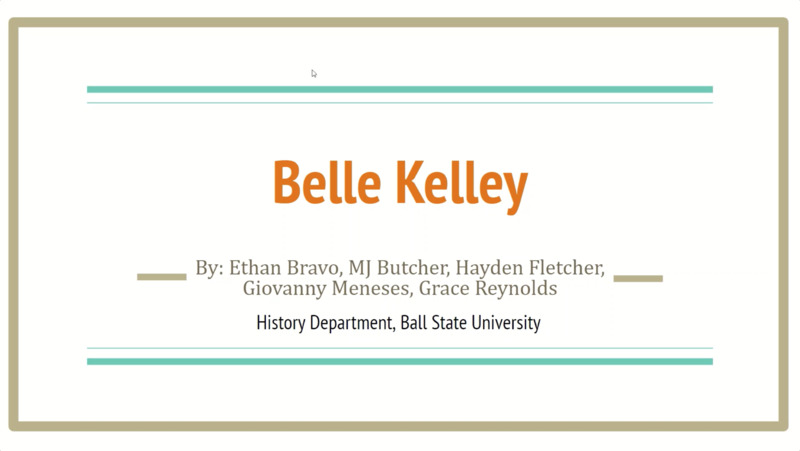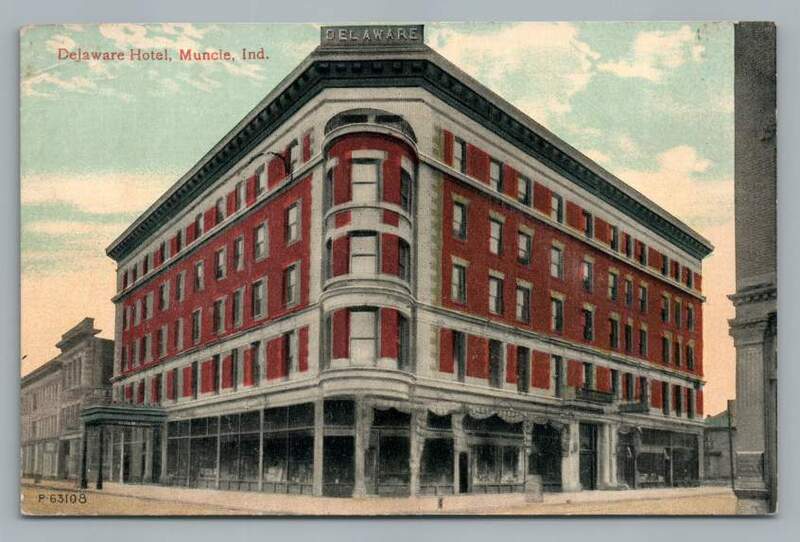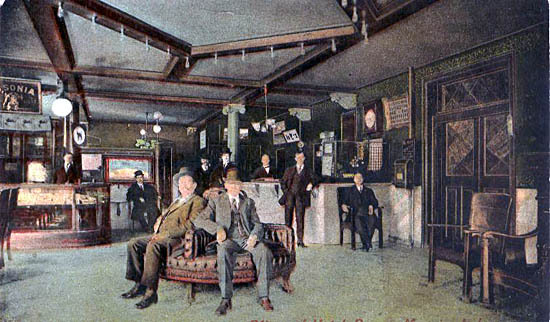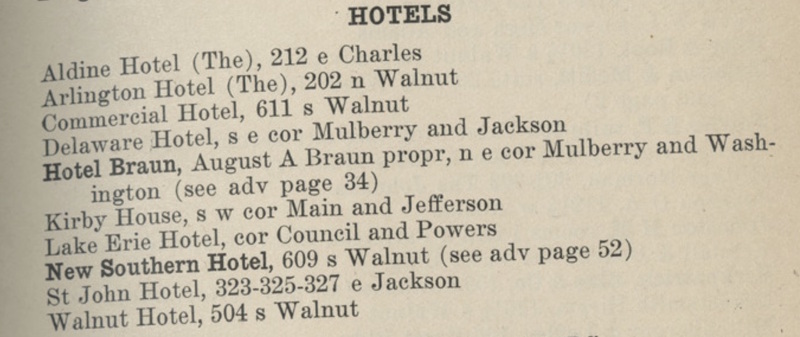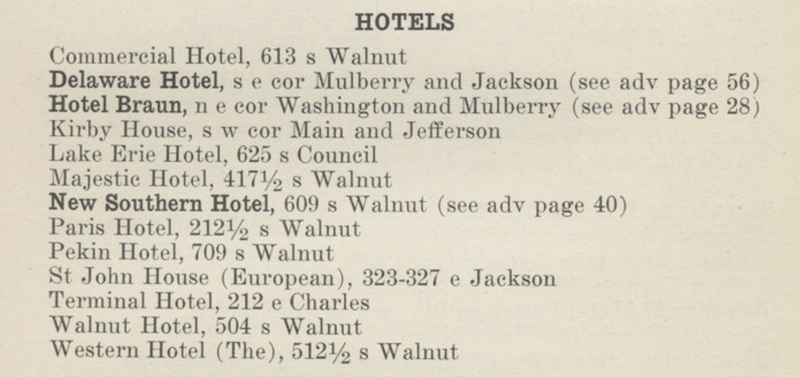Belle Kelley
Envisioning Isabelle Prince Leon, one of Muncie's Jewish businesswomen, hosting a reception at the Kirby House Hotel, leads us to another businesswoman, whose successes are harder to find. Belle Kelley was the African American proprietor of the Pekin Hotel, likely the first black-owned hotel in the city. Belle was born into slavery in Kentucky, traveled to Indiana where she and her husband Alexander worked in hospitality, and in the 1910s opened the Pekin Hotel at 709 South Walnut Street.
The hotel was popular, but also short-lived. This paradox reflects the challenge of researching Muncie's black community in a period of great growth and vitality. Enough documentary evidence remains to show the community's energy and success, but little remains in comparison to white businesses. Belle Kelley's career brings us a bit closer to that hard to find history.
This biography video was researched and created by Ethan Bravo, MJ Butcher, Hayden Fletcher, Giovanny Meneses, and Grace Reynolds for HIST 200-02 (Fall 2022) at Ball State University.
In the decades after the US Civil War, as many African Americans left rural areas and moved to growing cities, they clustered in a few professional areas. Factories employed many men and some women, and domestic service occupied most other women. In between these groups was the service and hospitality industry that hired, fed, and sheltered working-class blacks and whites. The service and hospitality industry grew as cities produced more factories, houses, and railway lines.
As Muncie's population surpassed 20,000 people in 1900, the downtown became a series of saloons, restaurants, and places to lodge. Muncie's city directories track the growth of hotels in this period. In 1881-82 there were four hotels. In 1893-94 there were nine hotels. In 1903-04 there were eleven hotels. In the decade that followed this growth seems to have tapered off as only ten hotels appear in the 1913-14 directory and thirteen in the 1915-16 city directory.
Note the all male and all white customers and the postcard above. These figures were meant to be signals to the white viewer of the hotel's professional success and reliability. This postcard ignores the fact that Hotel Braun had many black employees, including in 1913-14 Delaney Bradford, the chef. In the 1917-18 city directory Belle's husband Alexander is listed as filling that role. We can only assume that the Pekin Hotel had closed sometime in 1915 or 1916 and the Kelley family had found new work.
Left are pages from the 1913-14 Muncie City Directory (left) and the 1915-16 Muncie City Directory (below) listing the city's hotels. Curiously, the Pekin Hotel is absent from the 1913-14 list, but appears in the 1915-16 list. This is the opposite of what we find in Muncie's newspapers, which have frequent notices about the hotel and its guests from 1911 to 1914.
Comparing these lists of hotels it is clear that businesses came and went, but it also seems that some black-owned businesses were less likely to be accurately documented by city directories. Or perhaps their presence in the city was less closely followed by the white directory compilers.

Above: Muncie Evening Press, January 15, 1913.

Above: The Muncie Evening Press, July 24, 1912.

Above: Muncie Evening Press, July 11, 1914.

Above: Muncie Evening Press, April 15, 1914.
The Pekin Hotel was a frequent part of columns dedicated to Muncie's African American community. "In Colored Circles," which was published by the Muncie Evening Press, shows the hotel's central position in black social life. Visiting friends, headlining musicians and actors, all stayed at the Pekin. Cora Gurnell, the author of "In Colored Circles" even boarded at the hotel in these years. Her presence made the hotel the place to go to enjoy exciting events and submit them as news for her column.
As the notices (left) shows, the hotel was also a valued hub for both professional and social events. In July 1914, the ex-congressman George W. Murray lectured at the AME Church on race relations and stayed at the hotel. The Pekin hosted meetings of the Court Order of Calantha, a nation-wide women's group that strove to elevate black women and was an auxiliary to the Colored Knights of Pythias.
Much like the Hotel Braun postcard above signalled to its viewers, these events reveal how central the Pekin Hotel was to Muncie's African American community. The Pekin offered a space where black Munsonians could assemble and signal their own professional success. With columnist Cora Gurnell in residence, the Pekin Hotel became a center for black media and communication. Its closure indicates how difficult it was for large black-owned businesses like hotels to prosper in a city with only a 5% black population. What surely seemed like too much to the Ku Klux Klan at this time, was not enough for black businesses.
To hear more about the historian's process and the methodologies used to research and create historical narratives, check out the conversation between Ethan Bravo, MJ Butcher, Hayden Fletcher, Giovanny Meneses, and Grace Reynolds below:
Buildings offer another way of seeing the past. Just as Belle Kelley worked to establish the Pekin Hotel as a valued and attractive center of African American community in Muncie, Maria B. Woodworth-Etter traveled across the Midwest with her revival tents offering Christians of all races and classes a place to feel the Holy Spirit. Much like the long gone Pekin Hotel, the ephemerality of tent churches make them difficult to recreate. Instead we should think about them amidst Muncie's other religious buildings and consider how they appear in the records that remain. Click on Maria B. Woodworth-Etter to learn more.

